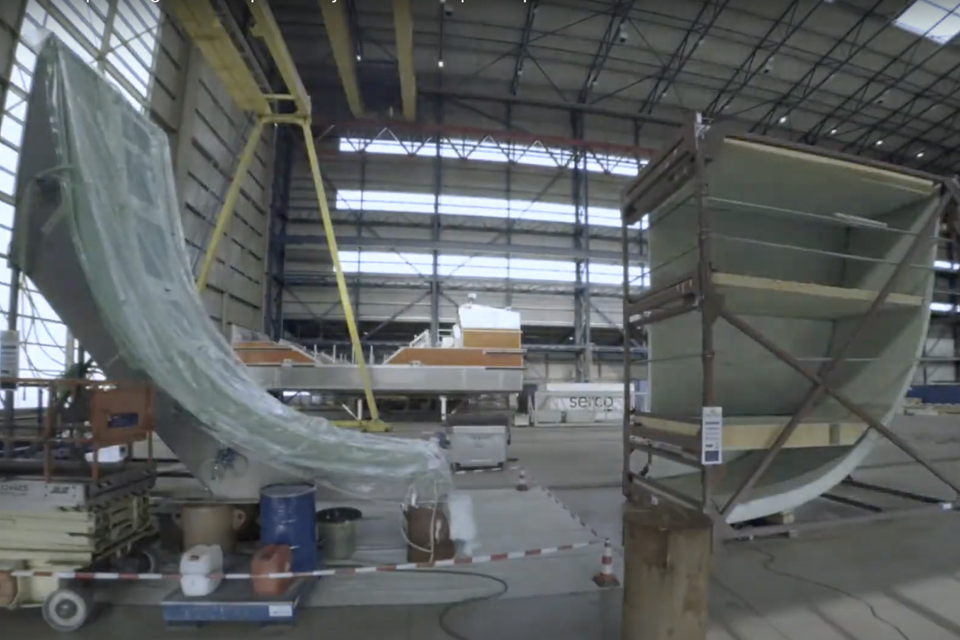A 6-metre high composite hull section for an 85-metre offshore patrol vessel has successfully been produced at Damen Shipyards in Vlissingen. The hull has been created fully in accordance with SOLAS and class rules as part of the RAMSSES Project.
Despite considerable progress in research and development as well as first commercial applications in recent years, the use of lightweight and other advanced materials in the maritime sector is lagging behind the potential. The European Innovation Action RAMSSES (Realisation and Demonstration of Advanced Material Solutions for Sustainable and Efficient Ships) is addressing the most relevant problems that hinder a broader and quicker technology uptake in the European maritime industry. Construction of the composite hull at Damen is one of the RAMSSES projects.
The partners have pioneered the capability to infuse thick laminates up to 6 metres in height that represent full ship hull structures, in a steel shipyard environment. Unique in this demonstrator project is that the whole cycle from product design, novel resin development, alternative fibre architectures, novel joining solutions, scaling up infusion technology, validation of large composite structures, and its risk based design are being developed and tested.
The work section of the project is led by Damen Schelde Naval Shipbuilding and Damen Shipyards Gorinchem, which has developed the baseline design. Engineering has been performed by Airborne UK and InfraCore Company. Evonik has developed the resin to infuse the composites. Following assembly, TNO will perform full scale tests for validation of design, quality management and structural performance. The approval process has been developed in close cooperation with Research Institutes of Sweden (RISE), Netherlands Maritime Technology and Bureau Veritas.
Composite benefits
There are numerous benefits to composite shipbuilding, chief amongst which is the contribution composites make towards greater maritime efficiency and sustainability. A composite vessel like the one the RAMSSES partners are working towards would weigh up to 40 per cent less than a steel equivalent. The results of this are a considerable reduction in both fuel consumption and emissions. In fact, a composite vessel can offer a reduction in global warming potential, aerosol formation potential, eutrophication potential, acidification potential and fuel consumption by up to 25 per cent.
During a “General Assembly”, the project partners were able to watch live at a distance how the vertical infusion of a composite ship’s hull was carried out under normal shipyard conditions. See the video below.








